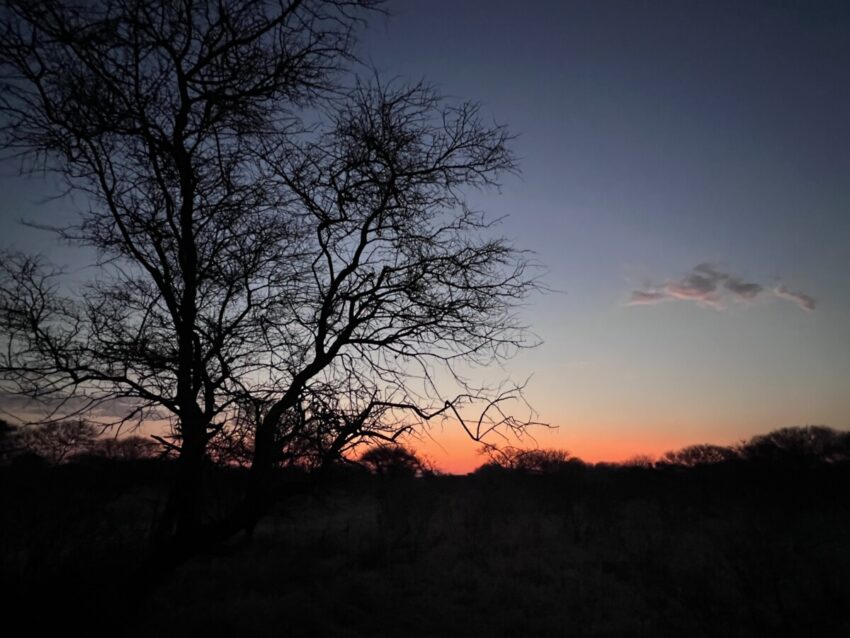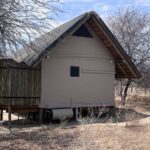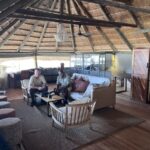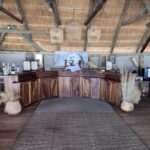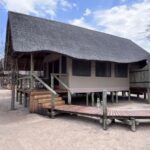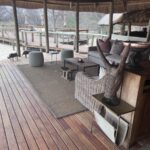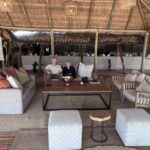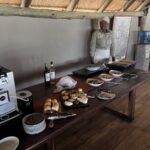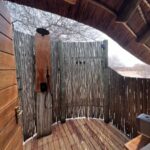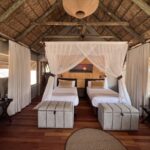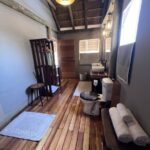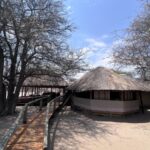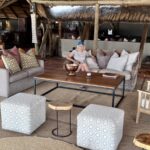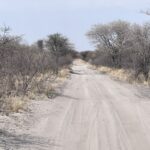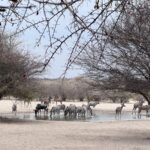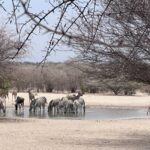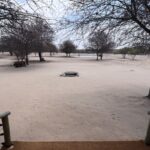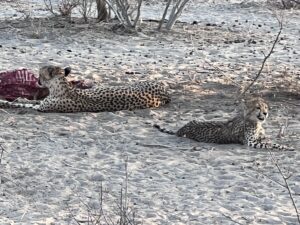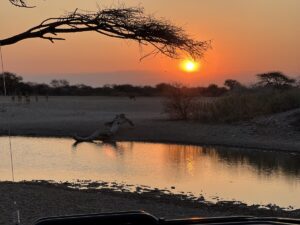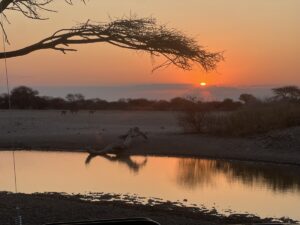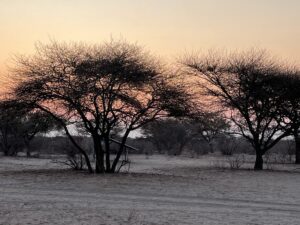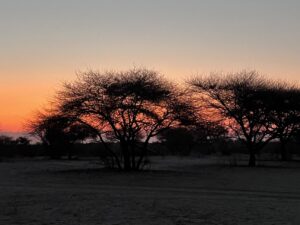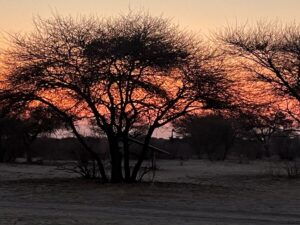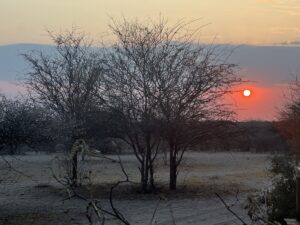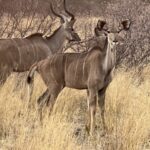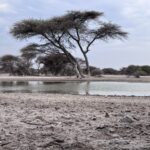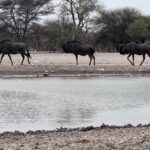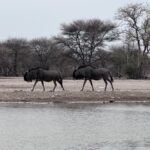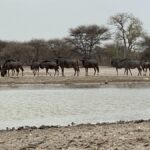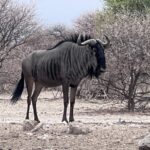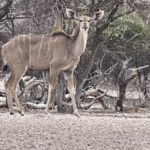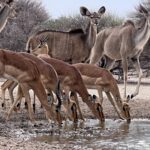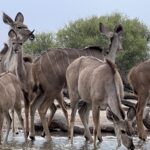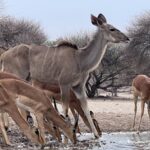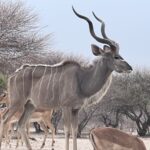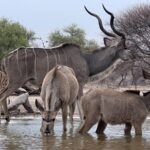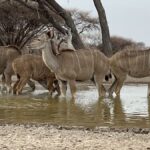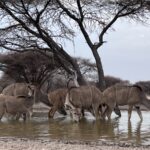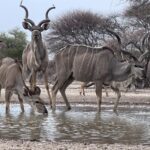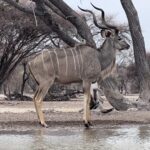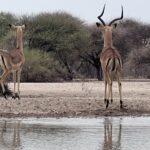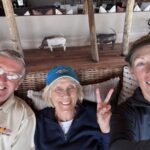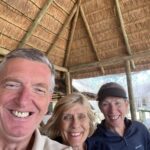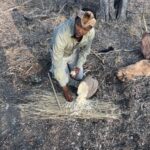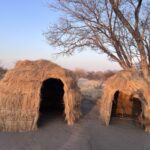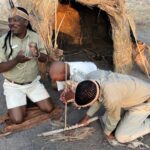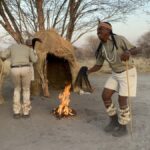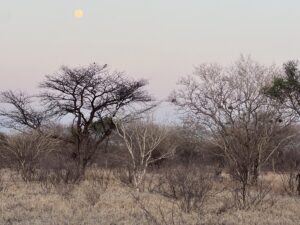Another special place in the middle of the Kalahari desert. The northern boundary of the central kalahari supports similar species as the main CKGR reserve, however the concessions and reserves in these areas follow the wildlife viewing trend of the Okavango Delta more closely, in that after the summer rains, in the December to March months, the animals disperse; game viewing is stronger in the cold, dry, winter months. The private reserves are fenced and typically offer special sightings of wild life such as bat-eared foxes, honey badgers, and porcupines, as well as Kalahari black-maned lions, oryx, springbok, and brown hyena.
Dinaka, meaning “horns,” is a private reserve located on the northern boundary of the Central Kalahari Game Reserve. The reserve offers an educational walk with San Bushmen in addition to day and night game drives. Year-round water holes result in spectacular photographic opportunities either from the underground bunker, hide or vehicle. The perfect contrast to a stay in the Okavango Delta, with an added hidden treasure!
The annual rains transform the arid desert landscape into a lush profusion of Kalahari vegetation, offering guests a unique insight into the lesser known desert experience.
The camp was amazing and we were so well looked after. The day before we arrived one couple had a lion on their deck roaring through the night. The man said that is was a little unsettling!!!The camp is in the shape of a semi circle around the water hole and there is always so much activity going on there.
Life around the waterhole!!
As you can see the cheetahs made good work of what was an impala. There was a mother and her three cubs. The cheetah, the world’s fastest land mammal, is one of the predators that finds sanctuary in the Kalahari’s wide, open spaces. Cheetah are known to be shy and elusive. They are regularly encountered, though, often with cubs. While cheetah numbers in protected areas, like Kalahari, are on the increase, they are classified as vulnerable due to the many risks which endanger the population across Africa. Female cheetah lead a relatively nomadic lifestyle in search of prey in large home ranges, whereas the males are more sedentary and may establish much smaller territories in areas with abundant prey and access to females. Cheetah are more active during the day, whereas lion, leopard and spotted hyena are more active at night. These larger carnivores, especially lion, often kill cheetah and regularly steal their prey.
Sunset in the Kalahari! A pride of lions nearby and a giraffe in the distance! And an African sunset with a very strong G & T in my hand!
The next morning we went to the underground bunker which is a small room with a long narrow opening overlooking a water hole. Once inside we were able to view the animals from ground level and watch all the comings and goings of the kudu and wildebeest. Once the pride of lions arrived all the other animals made a quick exit! The lion pride just lazed around without a care in the world.
Both the greater kudu and its close cousin, the lesser kudu, have stripes and spots on the body, and most have a chevron of white hair between the eyes. Males have long, spiral horns. The greater kudu’s horns are spectacular and can grow as long as 1.8 meters (about 6 feet), making 2-1/2 graceful twists.
Female greater kudus are noticeably smaller than the males. By contrast, lesser kudus are even smaller — about 90 centimeters at the shoulder. Males can weigh up to 105 kilograms (230 pounds), and females generally weigh about 22 kilograms less. Lesser kudus have smaller horns than their larger cousins and have conspicuous white patches on the upper and lower parts of the neck. Although both species are bluish-gray, grayish-brown, or rust color, the lesser kudus have five to six more lateral white stripes, for a total of 11 to 15. Both species have a crest of long hair along the spine, and greater kudus also have a fringe under the chin.
Fun times at Dinaka camp with our NBF Peter, who happens to live 5 minutes away from Denise! And then for our San Bushmen walk. We learnt how to survive in the Kalahari, what to eat and drink and how to apply the traditional medicines. To complete the evening as the sun was going down and with a much weaker G & T, the San Bushmen performed a traditional dance.
A beautiful full moon appeared as the sun was setting. Another day in paradise.

